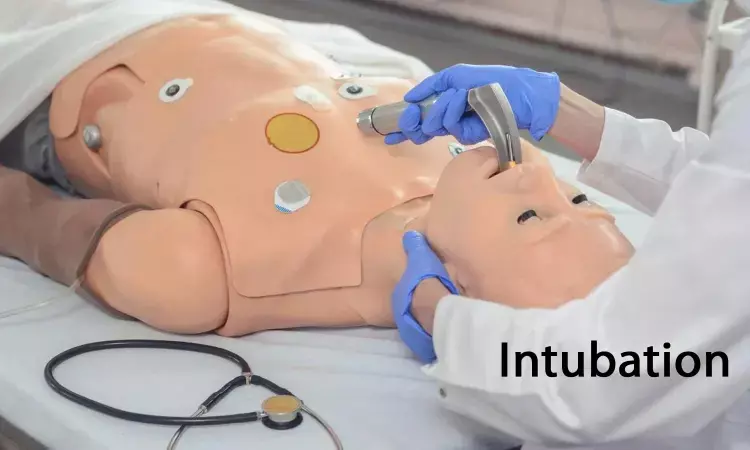- Home
- Medical news & Guidelines
- Anesthesiology
- Cardiology and CTVS
- Critical Care
- Dentistry
- Dermatology
- Diabetes and Endocrinology
- ENT
- Gastroenterology
- Medicine
- Nephrology
- Neurology
- Obstretics-Gynaecology
- Oncology
- Ophthalmology
- Orthopaedics
- Pediatrics-Neonatology
- Psychiatry
- Pulmonology
- Radiology
- Surgery
- Urology
- Laboratory Medicine
- Diet
- Nursing
- Paramedical
- Physiotherapy
- Health news
- Fact Check
- Bone Health Fact Check
- Brain Health Fact Check
- Cancer Related Fact Check
- Child Care Fact Check
- Dental and oral health fact check
- Diabetes and metabolic health fact check
- Diet and Nutrition Fact Check
- Eye and ENT Care Fact Check
- Fitness fact check
- Gut health fact check
- Heart health fact check
- Kidney health fact check
- Medical education fact check
- Men's health fact check
- Respiratory fact check
- Skin and hair care fact check
- Vaccine and Immunization fact check
- Women's health fact check
- AYUSH
- State News
- Andaman and Nicobar Islands
- Andhra Pradesh
- Arunachal Pradesh
- Assam
- Bihar
- Chandigarh
- Chattisgarh
- Dadra and Nagar Haveli
- Daman and Diu
- Delhi
- Goa
- Gujarat
- Haryana
- Himachal Pradesh
- Jammu & Kashmir
- Jharkhand
- Karnataka
- Kerala
- Ladakh
- Lakshadweep
- Madhya Pradesh
- Maharashtra
- Manipur
- Meghalaya
- Mizoram
- Nagaland
- Odisha
- Puducherry
- Punjab
- Rajasthan
- Sikkim
- Tamil Nadu
- Telangana
- Tripura
- Uttar Pradesh
- Uttrakhand
- West Bengal
- Medical Education
- Industry
Highest dexmedetomidine dose best for AFONI in patients undergoing oromaxillofacial surgeries: Study

Recently published study aimed to evaluate the efficacy of different doses of dexmedetomidine (DEX) for awake fibreoptic nasotracheal intubation (AFONI) in patients undergoing oromaxillofacial and oral malignancy surgeries. This randomised, double‑blind study included 90 patients aged 18–60 years and with American Society of Anesthesiologists physical status I/II. The patients were divided into three groups receiving different doses of DEX: 0.5 µg/kg DEX, 1 µg/kg DEX, and 1.5 µg/kg DEX. The primary outcome measure was the airway obstruction score, and secondary outcome measures included intubation scores, 5‑point fibreoptic intubation comfort score, and sedation assessment using the Ramsay sedation score (RSS).
The study found that the airway obstruction score, vocal movement, coughing, limb movement, and fibreoptic intubation comfort score did not differ significantly between the three DEX groups. However, the mean RSS was significantly greater in the Group receiving the highest dose of DEX (1.5 µg/kg DEX) compared to the other two groups. The study concluded that all three doses of DEX, when combined with topical spray and airway block, provided comparable airway obstruction scores and favorable conditions for AFONI.
The study revealed that 1.5 µg/kg DEX provided superior intubation conditions compared to lower doses, although not statistically significant. It was found that high doses of DEX resulted in favorable intubation conditions but increased the chances of airway obstruction and desaturation. Additionally, high doses of DEX led to a significant decrease in heart rate, systolic and diastolic blood pressure, and respiratory rate compared to lower doses.
In conclusion, the study demonstrated that graded doses of DEX provided comparable airway obstruction and intubation scores but had differing effects on sedation, hemodynamic variables, and the risk of airway obstruction. The authors suggested that further large-scale trials are necessary to evaluate the role of DEX as a single agent for conscious sedation in patients with anticipated difficult airways.
Key Points -
- The study evaluated the efficacy of different doses of dexmedetomidine (DEX) for awake fibreoptic nasotracheal intubation (AFONI) in patients undergoing oromaxillofacial and oral malignancy surgeries.
- Three groups of patients received different doses of DEX (0.5 µg/kg DEX, 1 µg/kg DEX, and 1.5 µg/kg DEX), and the primary outcome measure was the airway obstruction score, with secondary measures including intubation scores, fibreoptic intubation comfort score, and sedation assessment using the Ramsay sedation score (RSS).
- The study found that all three doses of DEX provided comparable airway obstruction scores and favorable conditions for AFONI, but the highest dose of DEX (1.5 µg/kg) resulted in superior intubation conditions, higher sedation levels, decreased hemodynamic variables, and increased risk of airway obstruction and desaturation.
Reference –
Arora, Sanya; Govardhane, Balasaheb T.; Srinivasan, Vanchula; Karandikar, Gayatri. Evaluation of different doses of dexmedetomidine for awake fibreoptic nasotracheal intubation in patients undergoing oromaxillofacial and oral malignancy surgeries: A randomised, double-blind study. Indian Journal of Anaesthesia 68(5):p 447-453, May 2024. | DOI: 10.4103/ija.ija_1004_23.
MBBS, MD (Anaesthesiology), FNB (Cardiac Anaesthesiology)
Dr Monish Raut is a practicing Cardiac Anesthesiologist. He completed his MBBS at Government Medical College, Nagpur, and pursued his MD in Anesthesiology at BJ Medical College, Pune. Further specializing in Cardiac Anesthesiology, Dr Raut earned his FNB in Cardiac Anesthesiology from Sir Ganga Ram Hospital, Delhi.


